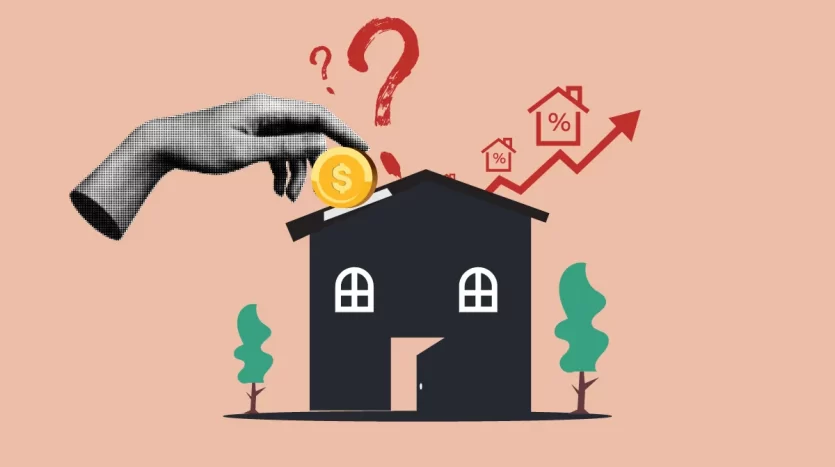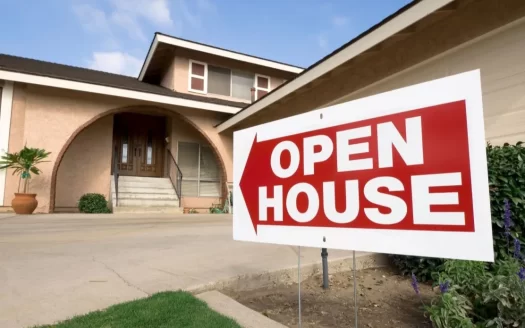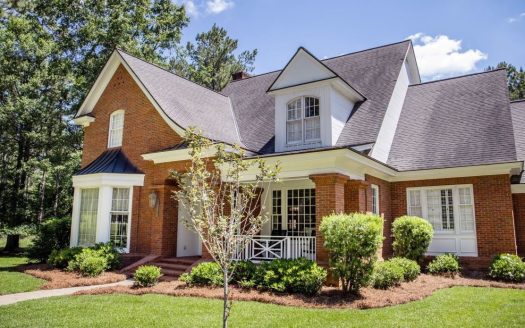Home sale stopped with 7% mortgage
[ad_1]
Sales are slow, so inventories of unsold homes are being built. Condo inventory is growing faster than single family. Some markets are slower than others. Let's look at the data for this week, mid-January 2025.
Inventory is ready
There are currently 632,000 unsold single-family homes on the U.S. market, up 1.25% from last week. That's almost 25% more unsold homes than a year ago. As I mentioned, the inventory of unsold condos is growing faster than ever. There are 177,000 condos on the market. This is 30% more than a year ago.
It's not unusual for mid-January inventory to be as high as it was this week. The holidays are over, some spring listings are out, and there aren't many sales yet. It is also common for inventory to drop again before the end of the month. And here you can see it in the example of each year.
Inventory growth for spring usually begins in the second week of February. When the market is hot, as it was during the pandemic—there were more buyers than sellers in the first quarter—so inventory continues to decline into March or April. We normally expect that transition week to be in early February.
One signal I've noticed in this current market is if inventory is already building. If inventory picks up again next week, it will be another signal of weak demand as a result of the high result. Our model expects inventory to decline next week, as it would in a “normal” year. Stay tuned for another signal next week.
New listings are lower than last week
Inventory builds up not because of supply growth, but because of weak demand. In fact, it seems that the highs also keep new lists. There were only 46,000 new listings for single-family homes this week, with another 7,000 immediate sales.
Immediate sales are those that have been listed and received an offer within a few days, so they are no longer in active inventory. There are 2% fewer sellers now compared to the same week a year ago, but there are 3.6% more of these new unsold listings than a year ago. So there are a few fewer sellers, but the inventory is growing faster than last year.
For this, there are two risks that we need to watch out for in the new listing data every week. Are there too many or too few sellers? Too few sellers restricts the market and drives up prices. This is changing. Most of last year have 5-10% more sellers than the previous year. We expect this to continue.
On the other hand, if we see a flood of sellers — lots of sellers — that will cause inventory to skyrocket and potentially be a trigger for home prices to fall. I do not expect this scenario.
I must note that do not needle the national housing numbers. For example, even in the height of summer, Pacific Palisades has fewer than 10 new listings each week. Although many houses fall into disrepair, the owners of those houses usually never sell them. So the impact of the Los Angeles fires will stretch over months and years, but will be difficult to see in weekly numbers like the new listings count. The impact was easier to see because Tampa and West Florida have stronger housing markets than California.
Pending home sales are slow
Let's look at home sales, the story of the moment. A total of 45,000 single-family home sales closed this week. That's 10% less sales than the same week a year ago. This is a very slow start to the new year.
Overall, the number of homes under contract is just over 257,000, down nearly 2% from a year ago. Weekly readings are at their lowest level in over a month, with all sets now under contract.
In 2024, we counted 49,000 new expectations; this year we count 45,000. Mortgage rates rose to 7 in December and we could see it.
House price gains are evaporating
The sales growth we measured in Q4 is gone, and home price gains from 2024 seem to have largely evaporated as well.
The median price of homes under contract this week — new pending home sales — is $375,000. This is almost unchanged compared to a year ago, only half a percent more. Usually, at this time of year, you'd expect sales prices to rise every week. You get fresh new inventory, early spring buyers are looking for, and that drives sales prices higher in the first quarter – usually. But this year the price pressure is weaker. Demand is weak and there is no upward pressure on selling prices. In normal years, home prices rise 5% or more over the previous year. This year is off to a weaker start than normal years for home prices.
The median price of all 257,000 homes under contract is $394,000. This figure is still 3.6% higher than a year ago. Many of them signed contracts in November and December. What this means is that even if the real-time signals are flat for home prices, January headlines — like the Case-Shiller Index — will still show some positive movement at home when the news comes out for indicators in a few months. prices.
Again, the real-time measure is pending contracts—the stage before the sale closes. The pending price is the best initial proxy for near-future selling prices. We can also look at more advanced information. For example, we can look at a cohort of newly listed homes in a given week and see where they are priced. When we look at it, the new lists do not show much optimism. This week, the median price of the newly listed cohort reached $409,000. That's a weekly increase, but only 2.5% more than a year ago.
The suggestion on house prices is that everything is under pressure at over 7%. Price indicators have not changed negatively, but they may soon.
The price cuts tell the story
As we look at the leading indicators for future selling prices, I watch the prices go down. This week, the percentage of homes on the market with price reductions fell by just 50 basis points. There is a slowdown in new listings and those on the market are taking more price cuts. This does not bode well for future sales prices. Usually this time of year you see more strength in prices with new listings and some sales. You can actually see the current stalled home buyer market in the price reductions metric.
There are 33.5% of homes on the market that received a price reduction from their original list price. Last year it was just 31%, and that number has been falling a little faster with more sales each week.
As I mentioned, I saw 10% fewer buy offers this week than a year ago. That's thousands of sellers who didn't receive an offer this week. Many of them choose to lower the asking price to see if they can create demand.
This time of year, the price cut line normally moves downward with fresh inventory. Newly listed homes don't drop in price until they've been on the market for a while. But the trend now extends to all those feeling the pinch of higher mortgage rates. We can see that buyers are waiting.
Mike Simonsen is the founder and will be a special speaker Housing Economic Summit Feb. 26 in Dallas. Learn more
[ad_2]
Table of Contents





